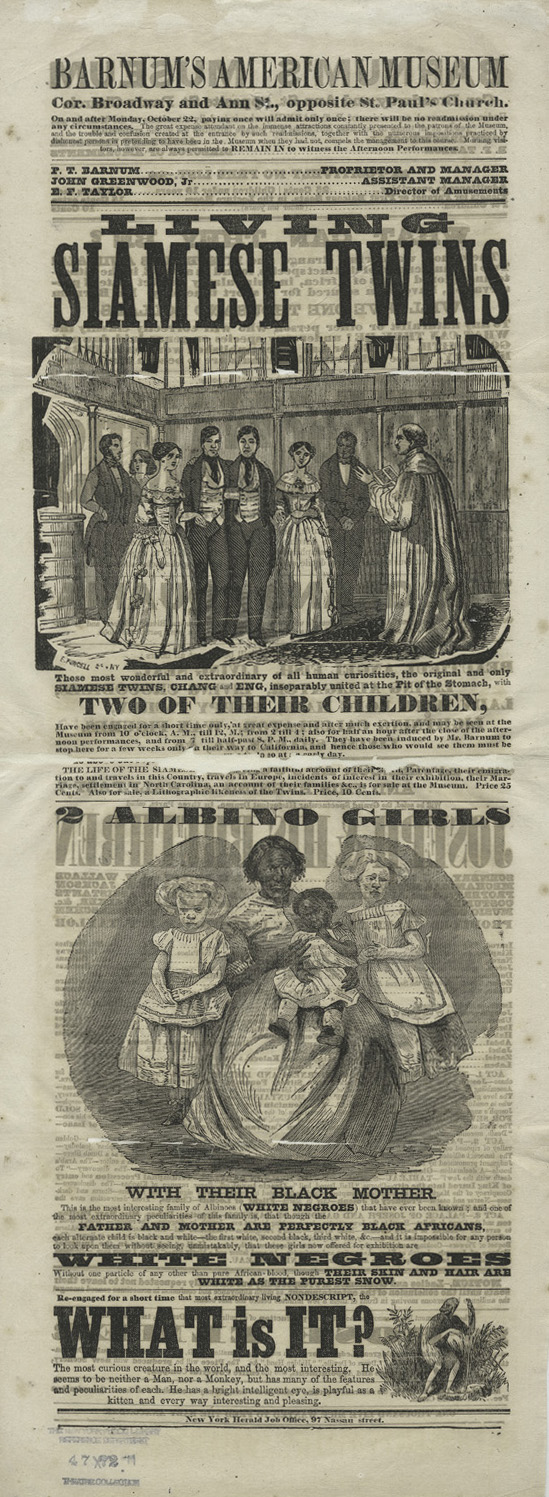The Lost Museum Archive
"Living Siamese Twins," 1860
This advertisement, probably from late 1860, reflects the variety of ways that the American Museum’s human exhibits reflected the antebellum era’s politically and socially charged issues of race. The conjoined twins Chang and Eng Bunker appeared for a limited engagement, along with two of their children; visitors could gaze at the men and their family members, and also purchase a pamphlet detailing their lives or a lithograph illustration of the twins. At the same time, museumgoers could view the “white negroes,” children with a pigmentation deficiency born to African-American parents. A third racially provocative exhibit was the “What Is It,” the racially ambiguous “living nondescript,” allegedly discovered in Africa and described by Barnum as a “man monkey.” The combination of such exhibits, on the eve of a Civil War fought over the future of racially-based slavery, suggest that Americans were fascinated with—and sought firsthand proximity to—the ambiguities of racial identity.


Source: New York Public Library for the Performing Arts